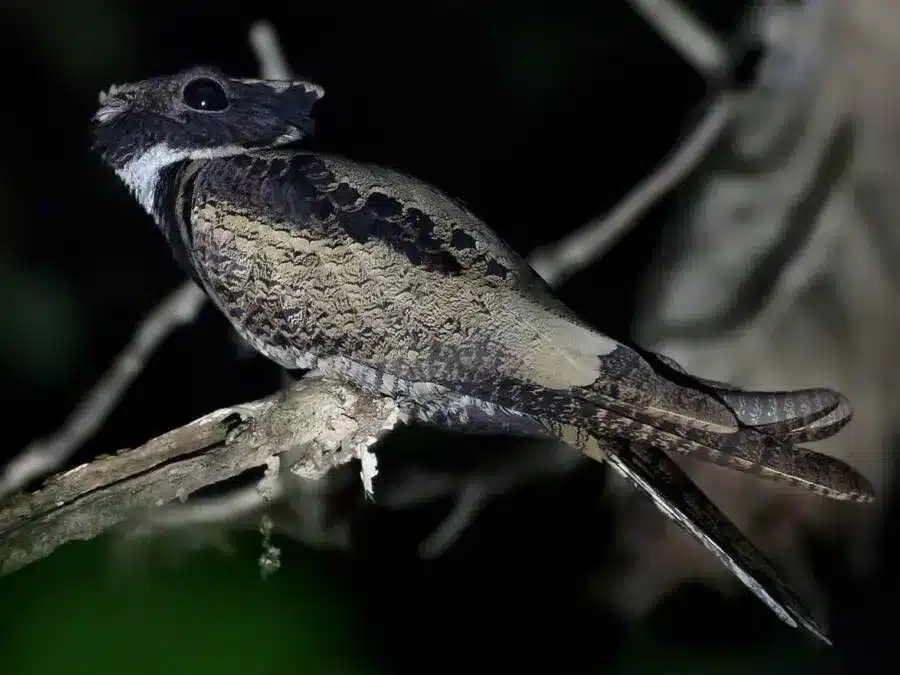About Great Eared Nightjar :
- The name ‘nightjar’ comes from the bird’s nocturnal habits and the fact that its calls are often described as jarring.
- Their diet usually consists of smaller insects. Instead of making nests really high up on trees, they typically roost on the ground or low branches.
- Nightjars are well known for their silent flight, which is due to the structure of their feathers. Hence they can easily sneak up on their prey and also move away without anyone noticing, if faced with a potential threat.
- Unlike other birds, the Great Eared Nightjar lays its eggs directly on the floor instead of building a nest.
- Habitat: These birds prefer to dwell in thick forests, woodlands and mangroves. Since they are nocturnal, you can catch them flying only at dusk or dawn, searching for food.
- Distribution: The Nightjar can be found roaming the skies from parts of India and Sri Lanka to the Malay Peninsula, the Philippines, and Indonesia.
- Conservation status
- IUCN: Least Concern
- Threat: Due to rapid loss in their habitat, they are under threat.
Q1: What are Mangroves?
It is a dense salt-tolerant forest found along tropical and subtropical coastlines. Covering approximately 4,740 square kilometers, they are a unique ecosystem which offer ecological as well as economic utility for coastal areas.
News: Is it a bird or a baby dragon? All about the mysterious creature
Last updated on December, 2025
→ Check out the latest UPSC Syllabus 2026 here.
→ Join Vajiram & Ravi’s Interview Guidance Programme for expert help to crack your final UPSC stage.
→ UPSC Mains Result 2025 is now out.
→ UPSC Notification 2026 is scheduled to be released on January 14, 2026.
→ UPSC Calendar 2026 is released on 15th May, 2025.
→ The UPSC Vacancy 2025 were released 1129, out of which 979 were for UPSC CSE and remaining 150 are for UPSC IFoS.
→ UPSC Prelims 2026 will be conducted on 24th May, 2026 & UPSC Mains 2026 will be conducted on 21st August 2026.
→ The UPSC Selection Process is of 3 stages-Prelims, Mains and Interview.
→ UPSC Result 2024 is released with latest UPSC Marksheet 2024. Check Now!
→ UPSC Prelims Result 2025 is out now for the CSE held on 25 May 2025.
→ UPSC Toppers List 2024 is released now. Shakti Dubey is UPSC AIR 1 2024 Topper.
→ UPSC Prelims Question Paper 2025 and Unofficial Prelims Answer Key 2025 are available now.
→ UPSC Mains Question Paper 2025 is out for Essay, GS 1, 2, 3 & GS 4.
→ UPSC Mains Indian Language Question Paper 2025 is now out.
→ UPSC Mains Optional Question Paper 2025 is now out.
→ Also check Best IAS Coaching in Delhi

















